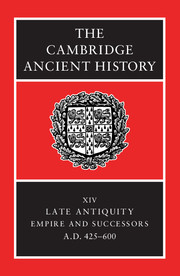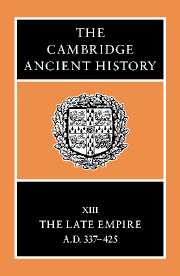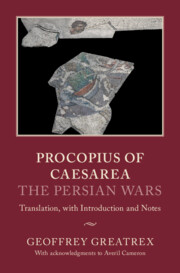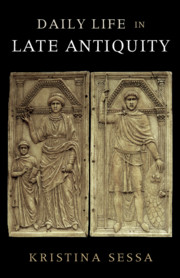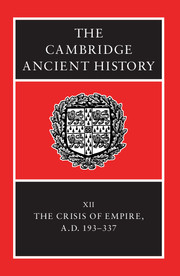The Cambridge Ancient History
With Volume 14 The Cambridge Ancient History concludes its story. This latest volume embraces the wide range of approaches and scholarship which have in recent decades transformed our view of Late Antiquity. In particular, traditional political and social history has been enormously enhanced by integrating the rich evidence of Christian writing, and the constantly expanding results of archaeological research. A picture emerges of a period of considerable military and political disruption, but also of vibrant intellectual and cultural activity. The volume begins with a series of narrative chapters. These are followed by sections on government and institutions, economy and society, and religion and culture. A section on the provinces and the non-Roman world marks the rise of new and distinct political and cultural entities. This volume, and the CAH, ends in around AD 600, before the Arab conquests shattered for ever what remained of the unity of the Roman world.
- Extension of the old CAH into the fifth and sixth centuries AD
- Opens up the period for further study
- Final volume in the current edition of the CAH
Reviews & endorsements
"One can only be immensely impressed on opening this book....An immmediately apparent and most attractive feature of the volume under review is its generous supply of maps which are not only excellently produced but put to imaginative use....The volume is generous around the margins of the ancient world....But it is the interpretative discussions that are of most interest....Perhaps this issue can most clearly be seen with reference to women....No one who reads it will fail to be daunted by how much there is to know, nor grateful for the skill and style with which its authors lay so much before us. And the book stands as a suoerb vindication of the new field of late antiquity: unknown until recently." Classical Bulletin
Product details
April 2001Hardback
9780521325912
1185 pages
262 × 173 × 66 mm
2.05kg
24 maps 3 tables
Available
Table of Contents
- Part I. Chronological Overview:
- 1. The Western Empire, 425–476 Peter Heather
- 2. The Eastern Empire: Theodosius to Anastasius A. D. Lee
- 3. Justin I and and Justinian Averil Cameron
- 4. The successors of Justinian Michael Whitby
- 5. The Western Kingdoms Roger Collins
- Part II. Government and Institutions:
- 6. Emperor and court M. McCormick
- 7. Government and administration Sam Barnish, A. D. Lee and Michael Whitby
- 8. Administration and politics in the cities of the fifth to mid-seventh centuries:
- 425–640 J. H. W. G. Liebeschuetz
- 9. Roman law Detlef Liebs
- 10. Law in the Western Kingdoms between the fifth and the seventh centuries T. M. Charles-Edwards
- 11. The army, c. 420–602 Michael Whitby
- Part III. East and West: Economy and Society:
- 12. Land, labour and settlement Bryan Ward-Perkins
- 13. Specialised production and exchange Bryan Ward-Perkins
- 14. The family in the late Roman world Andrea Giardina
- 15. Family and friendship in the West Ian Wood
- 16. State, lordship and community in the West (c. AD 400–600) Peter Heather
- 17. Armies and society in the later Roman world Michael Whitby
- Part IV. The Provinces and the Non-Roman World:
- 18. The north-western provinces Ian N. Wood
- 19. Italy, AD 425–605 Mark Humphries
- 20. Vandals and Byzantine Africa Averil Cameron
- 21a. Asia Minor and Cyprus Charlotte Roueché
- 21b. Syria, Palestine and Mesopotamia Hugh Kennedy
- 21c. Egypt James G. Keenan
- 22a. The Sasanid monarchy Ze'ev Rubin
- 22b. Armenia in the fifth and sixth centuries R. W. Thomson
- 22c. The Arabs Lawrence I. Conrad
- 23. The Balkans and Greece, 420–602 Michael Whitby
- Part V. Religions and Culture:
- 24. The organization of the Church S. G. Hall
- 25. Monasticism Philip Rousseau
- 26 Holy men Peter Brown
- 27. The definition and enforcement of orthodoxy Pauline Allen
- 28. Philosophy and philosophical schools Anne Sheppard
- 29. Education in the Roman Empire Robert Browning
- 30. The visual arts Robin Cormack
- 31. Building and architecture Marlia Mundell Mango
- Conclusion.

